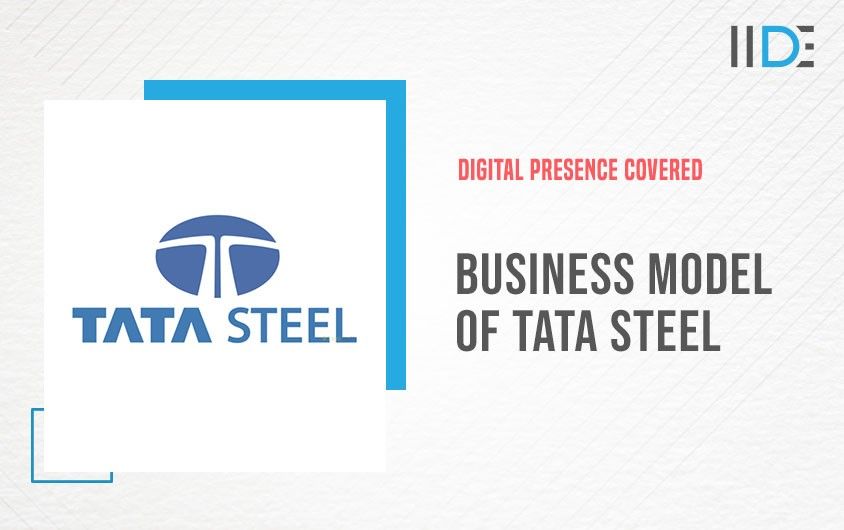About Tata Steel
Tata Steel Limited is the current name for Tata Iron and Steel Company Limited or TISCO. It is an India-based publicly traded firm. Tata Steel was created in 1907 by Jamshedji Tata and is a component of the Tata Group. It was ranked sixth as the most valuable brand in India in 2013, according to Brand Finance. Tata Steel has grown its business through associates, subsidiaries, and joint ventures.
The organization focuses on raising the level of living for all customers while also creating client trust. It was one of the first corporations to implement employee initiatives to create jobs for people living under British control at the time.
The Parsi legend ‘Humata Hukhta Hvarshta’ signifies excellent thoughts, nice words, and good acts, according to the group. It has added value to society over time by establishing different trusts and institutes. The corporation, as one of the top contributors to India’s GDP, contributed nearly 4% to the country’s GDP in 2018.
Now that we got the idea of the Tata Steel company, let’s understand the business model of Tata Steel in the coming section.
Business Model Of Tata Steel
A business model is a blueprint for how a firm will generate profit. In the end, it boils down a company’s potential to its essence. Whether a company is starting a new venture, expanding into a new industry, or changing its go-to-market strategy, developing a successful business model is essential. Let’s tear it down and understand the business model of Tata Steel.
Business Model Of Tata Steel – Product Offerings
Tata Steel was rated 10th in the world and second in India as the largest steel producer in 2015, with an annual crude steel capacity of 25.3 million tonnes and 9.7 million tonnes, respectively.
Tata Steel is linked to the iron and steel industry since it provides industrial products and solutions to 5,000 customers and 2.5 million customers annually. Tata Steel provides services to several key sectors, including:
1. Agriculture
- Energy and Power
- Consumer Goods
- Automotive
- Construction
- Lifting and Excavating
- Aerospace
- Packaging
- Engineering
2. Construction Products
- Building Components
- Modular
- Roofs
- Walls
- Floors
- Structural Steel
3. Flat Products
- Narrow Strip
- Electrical Steels
- Electro-plated Steels
- Packaging Steels
- Pre-Finished Steels
- Tubes
- Direct Rolled
- Metallic Coated
- Cold Rolled
- Hot Rolled
4. Processes
- Consulting Services
- Research and Development
- Automation and Design
Now we that understand the product portfolio of Tata Steel, let’s take a look at its pricing strategy in the coming section.
Business Model Of Tata Steel – Pricing Strategy
Tata Steel has forecast revenues of 117,151 crore rupees and total assets of 163,250 crore rupees at the end of the fiscal year 2015-16. Tata Steels’ pricing policy is heavily influenced by the company’s communication, distribution, and product policies, as well as elements like production cost, competition, demand, and government laws.
A great pricing policy, according to Tata Steel, is a mix of survival measures, expansion, and long-term profits. It has implemented a Market Penetration Strategy and has been able to grab a larger market share by keeping reasonable and inexpensive product pricing.
It has kept its rates lower than its competitors and has deterred competing enterprises from entering the market. So, now let’s see the services offered by Tata Steel company.
Business Model Of Tata Steel – Services
Tata Steel gives importance to its supply chain and quality management. Let’s have a closer look at it.
1. Management of the Supply Chain
The company assists customers in streamlining their supply-side processes to maximize customer value and obtain a competitive advantage in the marketplace. It puts orders with mills for a variety of thicknesses, widths, and grades of material to meet the needs of all of its customers.
The mills roll the raw material and deliver it according to the indent. The brand keeps optimal inventory levels for each of its customers. The material is processed to the customers’ specifications and delivered according to the customer’s timetable.
It also provides customers with Just In Time (JIT) and Just In Sequence (JIS) supplies based on its requirements.
2. Quality Control
Quality assurance is a method of avoiding problems in the delivery of solutions or services to clients by preventing errors and flaws in manufactured items. The company provides its customers with the assurance that the required quality parameters and the appropriate degree of quality in a service or product will be satisfied as part of its quality management-focused strategy.
Its entire operation is ISO 9000, IATF 16949, or equivalent (SQEP for TADA) certified. The brand employs a variety of methods and techniques to increase performance, reduce variability, improve products, improve worker safety, and reduce carbon emissions.
Quality Assurance Employees (QAP) or Product Application Group (PAG) personnel are stationed at various locations to address customer problems and give prompt resolution to ensure that the final processed material that reaches the customer is defect-free.
Customers sign TDCs / TPRs after consulting with them. These are a set of standards that allow the organization to provide clients with exactly what they want. It contains information such as sheet dimensions, flatness requirements, packaging information, and so on.
These are the services provided by Tata Steel – making them far above just a manufacturing concern but a solutions provider in the steel manufacturing sector.







